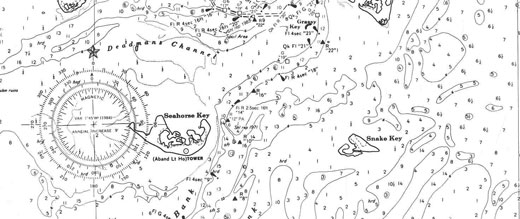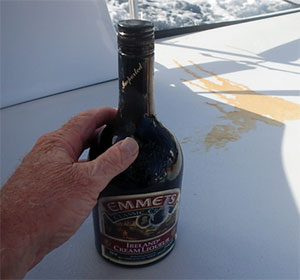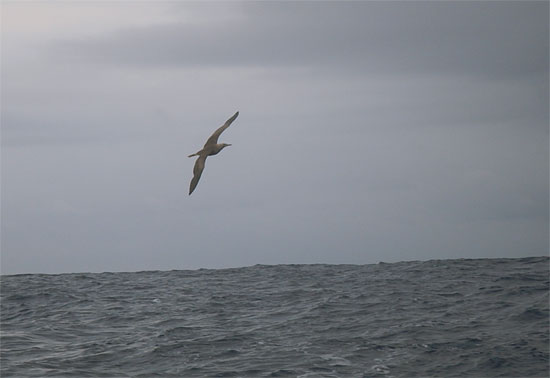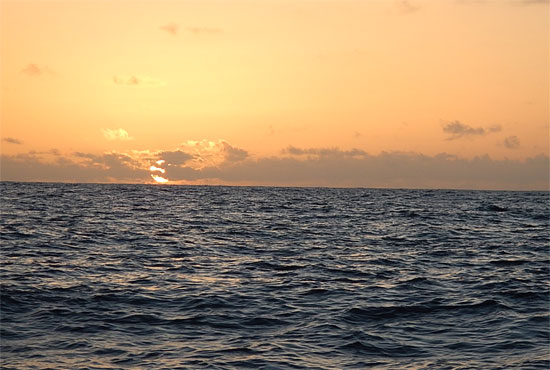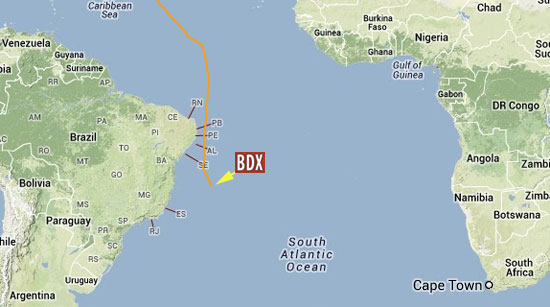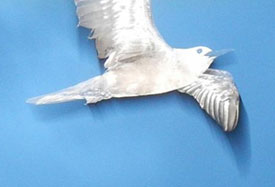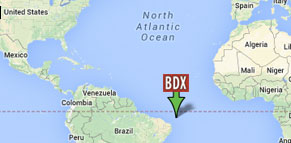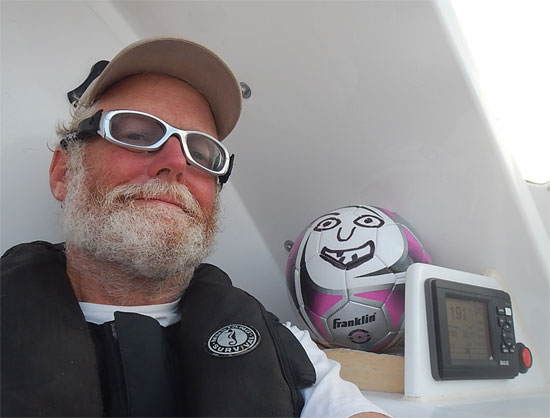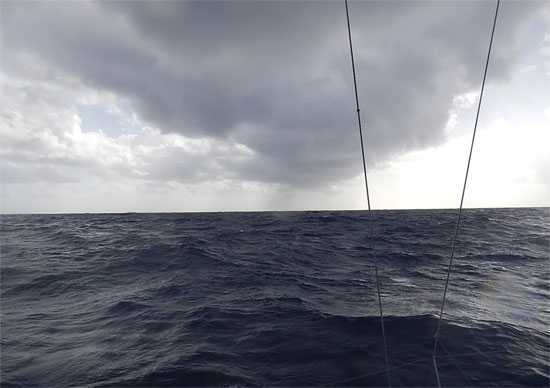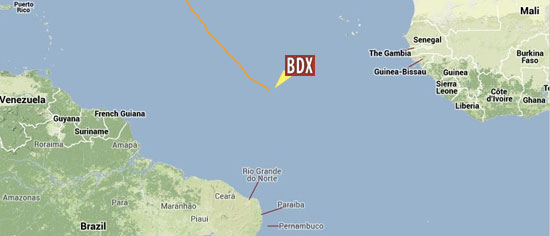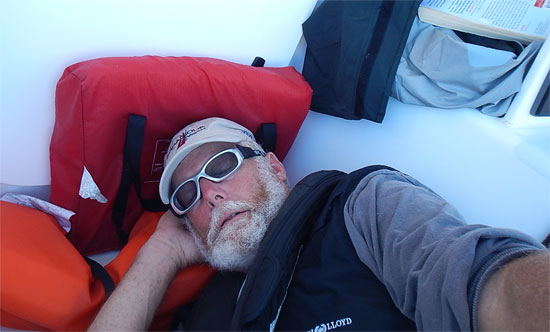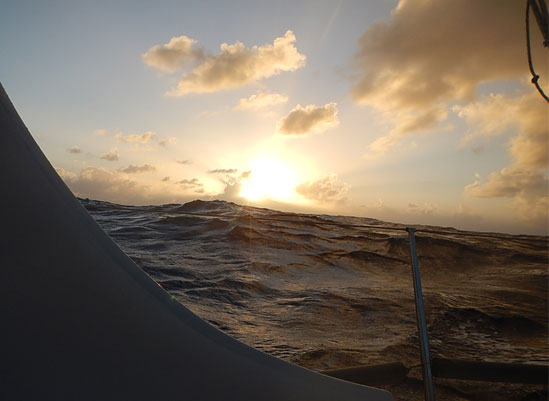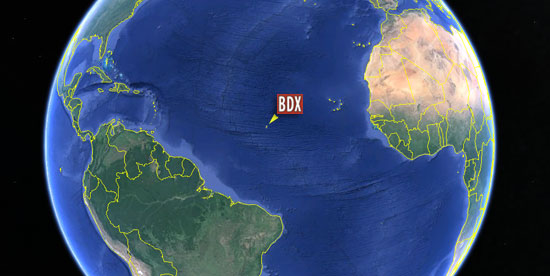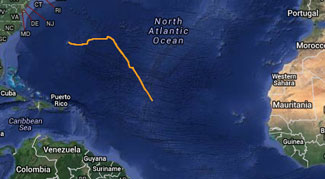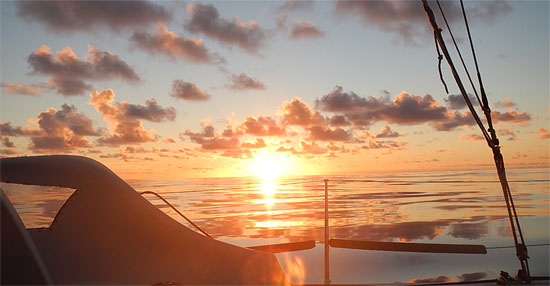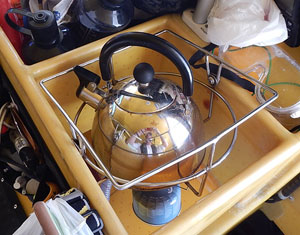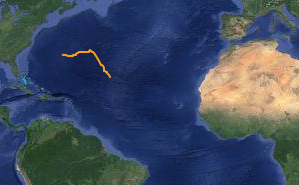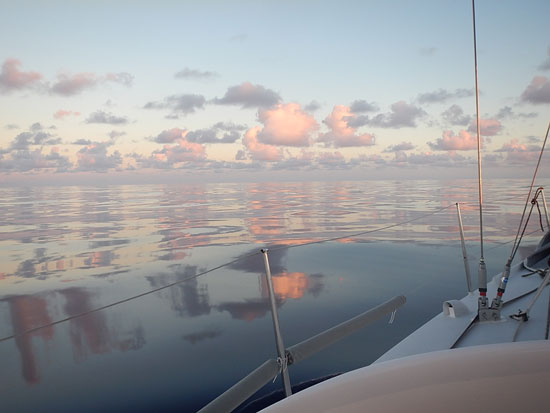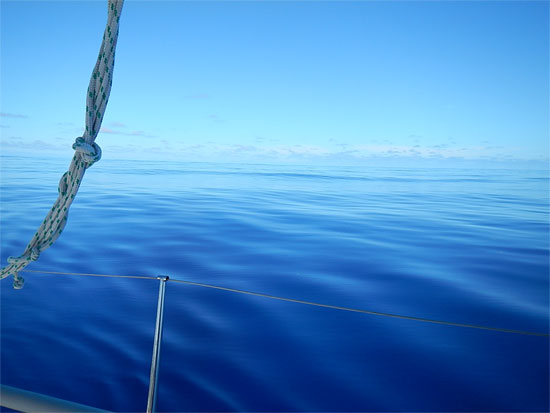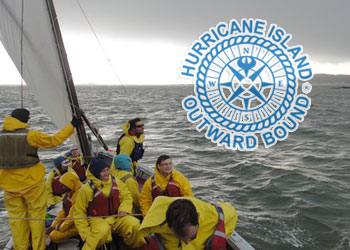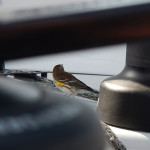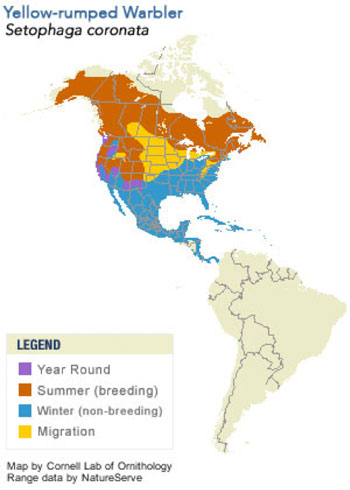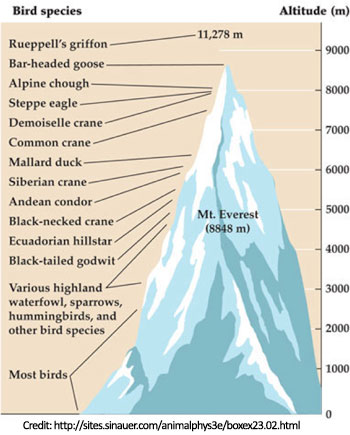After this many weeks at sea, time takes on different dimensions. Three days ago, a weather front passed through and pushed the winds right around the compass, which had a stimulating effect on our sailing progress towards Cape Town. Then the next day, after the last of the front had passed through, the skies moved on and the winds died off, which left us sailing along very slowly through wilting winds.
Sometimes though, quiet changes like these are a welcome relief from the constant attention needed when the wind and waves are all heated up. It’s a little hard to explain, but even normally easy tasks like reading a book require extra energy when so much is going on around you. I’ll read a page or two and then have to put the book down to observe, listen and feel certain that all is as it should be.
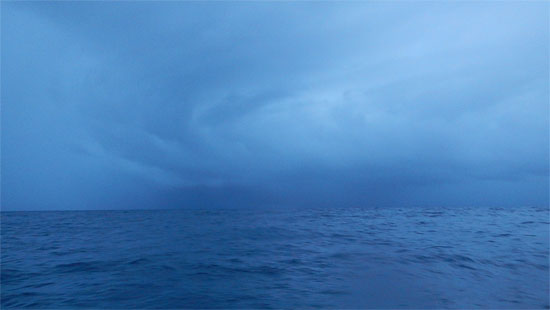 The Big Book of the Blue Sky (photo from earlier November) – 33.1029W, 4.8169N
The Big Book of the Blue Sky (photo from earlier November) – 33.1029W, 4.8169N
The middle of last week, the winds started to fill back in from the north and to swing around to the southwest. I know another front is approaching us from the west, which will likely bring some squally conditions, at the same time a clearing wind is pushing in from the southwest.
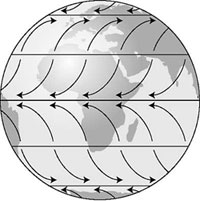 In the Northern Hemisphere, clearing winds come from the northwest, but since we are in the Southern Hemisphere, cold fronts come from the South Pole, which explains why the clearing front is from the southwest. The customary wind patterns that exist in the Northern Hemisphere are all the same in the south, but the directions are reversed down here! Ah, global symmetry! In any case, as I write this, we are sailing along at a pretty good clip making 9 and 10 knots towards our destination, as the winds build in anticipation of this new front that should arrive later tonight.
In the Northern Hemisphere, clearing winds come from the northwest, but since we are in the Southern Hemisphere, cold fronts come from the South Pole, which explains why the clearing front is from the southwest. The customary wind patterns that exist in the Northern Hemisphere are all the same in the south, but the directions are reversed down here! Ah, global symmetry! In any case, as I write this, we are sailing along at a pretty good clip making 9 and 10 knots towards our destination, as the winds build in anticipation of this new front that should arrive later tonight.
Here is a video that was shot earlier in the month that surveys the horizons and sees squalls approaching. I figure by the time you see this video, that I will have met up with squalls like the ones I am pointing out in the video.
Squalls Approaching (video from earlier November)
Besides monitoring the weather and calculating how it might affect our course, life onboard follows a pretty general routine. At first light, I give Bodacious Dream a regular checkup to see if anything has happened in the dark and groggy hours of the night. During the day, I’m jumping around making the necessary changes to sails and gear and keeping check on everything, while I think about the menu for the evening to tease myself with thoughts of good things to come. Usually I end up writing these updates in the middle of the day, when I’m trying to stay out of the bright heat of the sun.

Showtime at the Apollo (photo from earlier November) – 32.9431W, 2.0591S
Towards the evening, I get ready for the “big show” – by which I mean sunset. With no mountains or buildings out here for the sun to slip behind, she rises up at the horizon line and sets just the same. So, depending on cloud cover, and atmospheric conditions, and the color and movement on the surface of the water at that time, every setting is unique, with some decidedly more spectacular than others.
During this time, I try to relax and simply watch, sometimes accompanied by the birds who follow along behind the boat floating effortlessly back and forth, like seamstresses sewing back together the wake the boat has made in the water. As darkness falls, I watch the bright stars and planets make their appearance. This time of night can be a bit tricky, as I must continue to perform actions around boat, but as there isn’t enough light in the sky, sometimes my observation of what I’m seeing gets mixed in with my intuitions of what I think I’m seeing.
But then, night enfolds us, at which point I try and weave my little 20-minute patches of sleep into a fabric large enough to cover my body’s needs. And then, soon enough daylight announces its arrival, the sun peaks over the horizon and the routine begins once again. Today, we have about 1600 miles left to Cape Town. That may seem like a relatively short distance given the 6000 miles we’ve logged since leaving Jamestown, Rhode Island on October 2nd – but, that’s still a full week of sailing until we arrive in Cape Town – during which time, a lot can happen.
Thinking about you all making plans for Thanksgiving … always among my favorite holidays.
– Dave and Bodacious Dream
10.47372W, 33.93614S
P.S. Also, to avoid some of the inconsistencies with Facebook posts – if you (or people you know) might want to receive these updates in your email box, here is the link to the Email Sign Up page.




